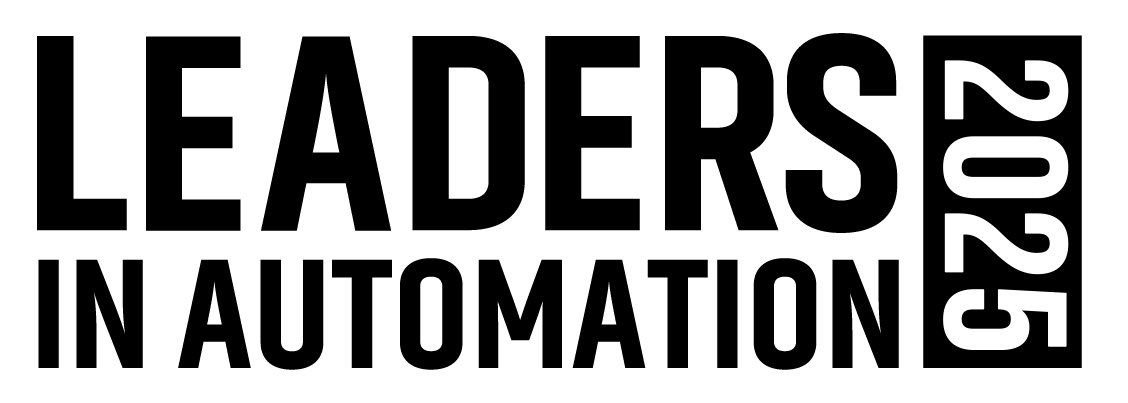Is Workforce Automation the Cure for Manufacturing’s Talent Woes?
Why this article is worth reading:
- Nestlé transformed a critical powder production process from manual guesswork requiring decades of experience to an automated system that new workers can master within a couple of years.
- Discover the practical steps for identifying what to automate, from addressing quality and safety pain points to conducting ROI analysis and managing the crucial change management challenges that make or break workforce automation initiatives.
- Learn how workforce automation can eliminate repetitive, high-turnover tasks while generating new higher-skilled positions that attract younger workers to manufacturing careers.
Effective workforce automation has become an important technology given the challenges of today’s industrial business climate. Though the U.S. manufacturing sector has experienced sustained growth post pandemic, more recent global trade and economic conditions have industrial players scrambling to cover more ground with fewer resources.
The key reasons for this scramble: retiring boomers and the reluctance of younger workers to enter the manufacturing field have created a talent and skills crunch that threatens to undermine industry’s sustained productivity and revenue growth.
To put this into perspective, there could be as many as 3.8 million net new employees needed in the manufacturing sector by 2033 with around half (1.9 million) of the positions left unfilled unless the skills and talent issue is resolved, according to a 2024 study from Deloitte and The Manufacturing Institute. The scope of the problem is significant, with 65% of survey respondents noting that attracting and retaining talent is their primary business challenge.
Smarter, more flexible and holistic use of automation is crucial to solving these challenges, according to the McKinsey Global Institute. McKinsey research found modern automation technologies applied at scale address industry’s talent issue in two critical ways: 1) Automation reduces the number of low-skill roles and eliminates repetitive, manual tasks that can lead to high turnover while 2) creating new higher-paying roles that have greater appeal to the next-generation workforce.
“Finding people for many [manufacturing roles] is getting harder and harder, especially in smaller towns,” noted Scott Reynolds, 2025 president of the International Society of Automation and senior manager for cybersecurity at Johns Manville, a manufacturer of insulation and commercial roofing, as well as glass fibers and nonwovens for commercial, industrial and residential applications. “Now that AI is a hot topic, people are more open to talking about how automation can help people do their jobs more effectively. The key is to upskill people and leverage new skills and processes to be more competitive in the market.”
Nestle’s experience with workforce automation
Historically, workflow automation was associated with automating tasks performed by humans to reduce errors and capture required data. Here, the emphasis has largely focused on “paper on glass” workflow tools, which replicate paper-based processes in a digital format.
With the right skills, knowledge and training, a lot of people will be able to take on new responsibilities. It’s about allowing people in existing roles to do more.
But with new capabilities, such as AI-fueled anomaly detection and GenAI assistants, automation’s role is expanding to augment the efforts of human workers, helping to boost productivity and performance to new levels, said Keith Chambers, vice president for manufacturing solutions at Aveva.
Unlike a command-and-control scenario, which issues specific instructions and automates a particular set of tasks, Chambers sees a shift to human-centric automation, leveraging technology to serve up everything operators need to know about how to perform a job optimally as needed. Using automation in this manner, workers can operate with greater knowledge and independence, boosting overall productivity and delivering intelligent — and often real-time — insights that facilitate higher-value decision making.
“The big push in Industry 4.0 around lights-out operations has given way to a more human-centric way of work,” Chambers explained. This involves “leveraging the capabilities and contributions people can make.”
At Nestlé, a critical agglomeration process — specifically, the wetting and drying of powder for beverage products such as Nesquik and Ovaltine — was handled manually, often producing unwanted variabilities in moisture and density. While the process yielded the specified weight criteria, fill levels per container were inconsistent, requiring operators to manually fill jars for a more visually satisfying appearance. This workaround also generated costly waste.
The combination of Aveva Historian, Advanced Analytics and the Connect cloud service enabled Nestlé to use real-time data to predict quality parameters for powder production and recommend optimal setpoints. This helped operators improve product consistency while also decreasing product waste on production and packaging lines, Chambers said.
This automated approach also helped Nestlé achieve the highest quality product output without total reliance on a small cadre of industry experts.
“It would take a 30-year operator to know how to manage the front-end processes to get this level of quality,” Chambers explained. “Nestlé was able to achieve this level of quality output with a team [that had been] in place for only a year or two.”
The control loop plays a critical role
While it has many potential applications, the workforce automation concept typically lends itself to streamlining the repetitive tasks associated with collecting, analyzing and prioritizing operations and production data. For example, consider a food and beverage manufacturer facing operational challenges in the production of edible oils, where each product variation requires unique settings and configuration tuning to get the best results.
Manual adjustments, predictive modeling and automation of basic configurations helped improve operations and the company’s final product, but the changes didn’t make a big difference in performance and productivity gains. By implementing Control Loop Performance Monitoring (CLPM) technology with state-based analytics from Control Station, the edible oil processing facility was able to give workers an accurate assessment of operating conditions for each product, boosting their visibility into specific operations and allowing them to make adjustments to fully optimize production performance.
With this software, “they get an actionable list of problems to fix rather than having to go around and find them or respond to alarms,” explained Bob Rice, vice president of engineering for Control Station. “It lets them be proactive.”
Merck’s use of workforce automation
Pharmaceutical giant Merck is also using workforce automation to elevate its operational availability (OA) and overall equipment effectiveness (OEE) practices. Here, using the Seeq predictive analytics platform has replaced manual processes and after-the-fact downtime reporting with a digital approach that automates and standardizes data, calculations and output.
If you have a really manual process, by the time you get all the data in it’s already old, so you’re looking at something you can’t really act upon.
“Traditionally, you need a lot of people to perform analytics at scale, but our technology lets one person look across many results,” noted Joanna Zinsli, product manager at Seeq. “We are enabling [the use of] different types of [workflow] automation so workers can spend less time in manual workflows to see value.”
Piloted at a Merck filling facility for vaccines and biologics, the automated OA/OEE tool decreased turnaround variability and facilitated the identification of key improvement opportunities for new materials and turnaround stages. The traditional process required a dedicated manufacturing engineer in each area of the operation to manage the data, perform calculations and visualizations, and do presentations. With this process — and the time it took to go through all those stages — the data was no longer as valuable.
“If you have a really manual process, by the time you get all the data in it’s already old, so you’re looking at something you can’t really act upon,” said Henny Hampton, Merck’s associate director of data and digital manufacturing.
Reducing unplanned downtime
Workflow automation is also helping Havco Wood Products better manage asset health to reduce breakdowns and unplanned downtime and more effectively manage its spare parts inventory. The manufacturer of oak laminate flooring for trucks and containers hit a wall using manual processes to manage 500 critical assets such as planers, dryers and saws and ensure its spare parts inventory of more than 3,500 stock items was consistently up to date.
Using Fluke Reliability’s eMaint CMMS (computerized maintenance management system), the Havco maintenance team now gets data-driven insights that help them decide when to replace an asset or make repairs, proactively. Spare part requirements are automatically added to work orders, which helps the crews show up prepared while reducing downtime.
How to focus workflow automation applications
Regardless of technology, the first step towards successful workforce automation is figuring out exactly what to automate based on a variety of factors, including addressing long-standing pain points in areas like quality, worker safety or unplanned downtime. It’s also important to conduct a rigorous cost analysis to determine what delivers the optimal ROI.
From a technical standpoint, organizations need to work through data quality and integration issues as well as cybersecurity concerns — a vector that was not an issue with traditional manual workflows and processes. Integration and connectivity between systems and data silos is particularly important for automation use cases that are heavily dependent on real-time data and analytics. “You can’t have silos of data. Everything has to be linked together,” said Rice. “It’s not one system improving a controller that’s important — the ultimate goal is to improve the efficiency of the plant.”
It would take a 30-year operator to know how to manage the front-end processes to get this level of quality. Nestlé was able to achieve this level of quality output with a team that had been in place for only a year or two.
As with most transformation initiatives, change management issues are the biggest challenge, and that is especially true when automating processes and worker tasks. Engage the people who are instrumental to the process in the upfront work to determine what can be automated and be transparent about the objectives of every use case, noted Zinsli. It’s imperative to put training and skills building initiatives in place so workers are comfortable not only using the software but settling in to redefined workflows.
And as use of AI-enabled automation spreads, resolving the trust issue is critical. Pick tools capable of creating reasonable patterns and predictive ways to solve problems, and don’t blindly automate. Instead, apply the technology only if it can be shown to improve workers’ day-to-day tasks and working conditions.
The most important change management missive is to tamp down the common misconception that AI and automation are all about taking people’s jobs. While some jobs will be eliminated, workforce automation is not a zero-sum game. “With the right skills, knowledge and training, a lot of people will be able to take on new responsibilities,” said Reynolds. “It’s about allowing people in existing roles to do more.”
More workforce automation coverage from Automation World:
About the Author
Beth Stackpole, contributing writer
Contributing Editor, Automation World

Leaders relevant to this article:


